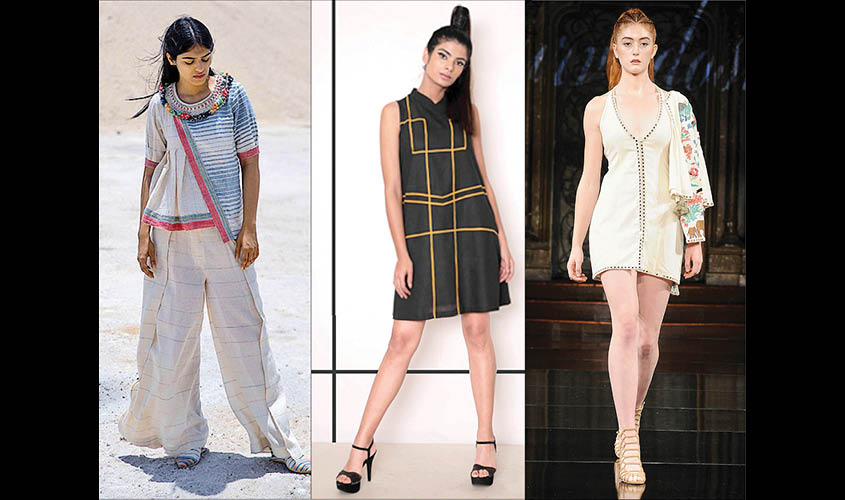Indian designer Purvi Doshi is best known for using hand-woven textiles and organic colours in her designs. The Ahmedabad-based designer, who unveiled her “Sugar Cotton Wool” collection on National Handloom Day, 7 August, speaks to Guardian 20 about sustainability in fashion, and the use of hand-embroideries in her line.
“Sugar Cotton Wool,” she says, “is our tribute to the art of weaving and is dedicated to the weavers of Gujarat. It seeks to place the versatile and sustainable Kala cotton on the world stage.”
It took Doshi almost six months to put the collection together. She says, “The journey of this collection started with a small work of Kutch weaving by our weaver. We got inspired by that and then we decided to pick up this art for our upcoming collection. The collection started with a lot of trials and samplings for the weave. It took almost six months to get this weave completed.”
Most designs by Doshi are decorated by aari (a beautiful needlework of repeated fine chain stitches) and mirror-work hand-embroidery (a type of embroidery which involves attaching small bits of glass to the fabric).
It has been four years since she began her journey of working towards sustainable fashion. “Since the past four years, we have been working with khadi and other cotton fabrics. We only use natural and organic colours, which don’t harm the earth and are also comfortable to wear. The philosophy of our brand is cruelty-free and sustainable clothing. So we don’t even use silks because it involves the killing of silkworms,” she says.
The designer also explains the process of preparing natural dyes and organic colours. Doshi says, “Natural and organic dyes are made from the ingredients or the things that we get from nature. For example, indigo colour is made from indigo leaf, red colour is made from madder, which is a bark of a tree, yellow is made from harda, which is a fruit.”
Now a recognised face in the fashion industry, Doshi has had her share of ups and downs in the past. “The biggest challenge”, the designer reminisces, “was to work with natural colours.”

She adds, “Since using natural colours employs hand-dyeing techniques, you don’t get the same colour or tone of the fabric every time you dye it. While making hand-woven fabrics, there are small weaving errors, because everything is done here by hands. But that’s the beauty of this style. The real challenge is the time that the whole procedure takes, as the yarns are hand spun first, then they are dyed in natural colours, and then they are finally weaved by hand. It takes about
On the advances made in sustainable fashion, Doshi says, “There are lots of newly evolved techniques in sustainable fashion but we haven’t yet experimented with them. However, we make recycled cloth papers from the waste fabric that gets collected in our organisation. We even printed our look books on the same waste recycled cloth paper.”
The brand also believes in empowering women by providing them with employment. “Our brand not only works with weavers. There are also lots of other artisans involved with us. The hand weavers and natural dyers are the people who do hand embroideries for us. Then we have our tailors who give us the final outfit. So we are working hand-in-hand with all these artisans to create better livelihood opportunities for them. Currently, there are 20-25 weavers and more than 200 women artisans who are working with us.”
According to the designer, handlooms are making a comeback in mainstream fashion and are the preferred choice of many buyers around the world. She says, “Nowadays people are opting more for handloom than machine-made clothes because the feel of handloom is so comfortable. As hand-woven fabrics are versatile, there is versatility in the designs as well. There are lots of designers who have started making modern ensembles with these fabrics. Even my own new collection, ‘Sugar Cotton Wool’, is made from handloom and has a completely modern look and feel.”
While some believe that hand-woven fabrics are only available in dull colours, Doshi differs. She says, “Hand-woven fabrics can be in any colour you want. Yes, there are limitations when we are using natural colours but they are not at all dull. You get beautiful yellows, indigos, reds, tones of browns and many others. Though natural colours are earthier than usual bright colours, they are not dull.”

